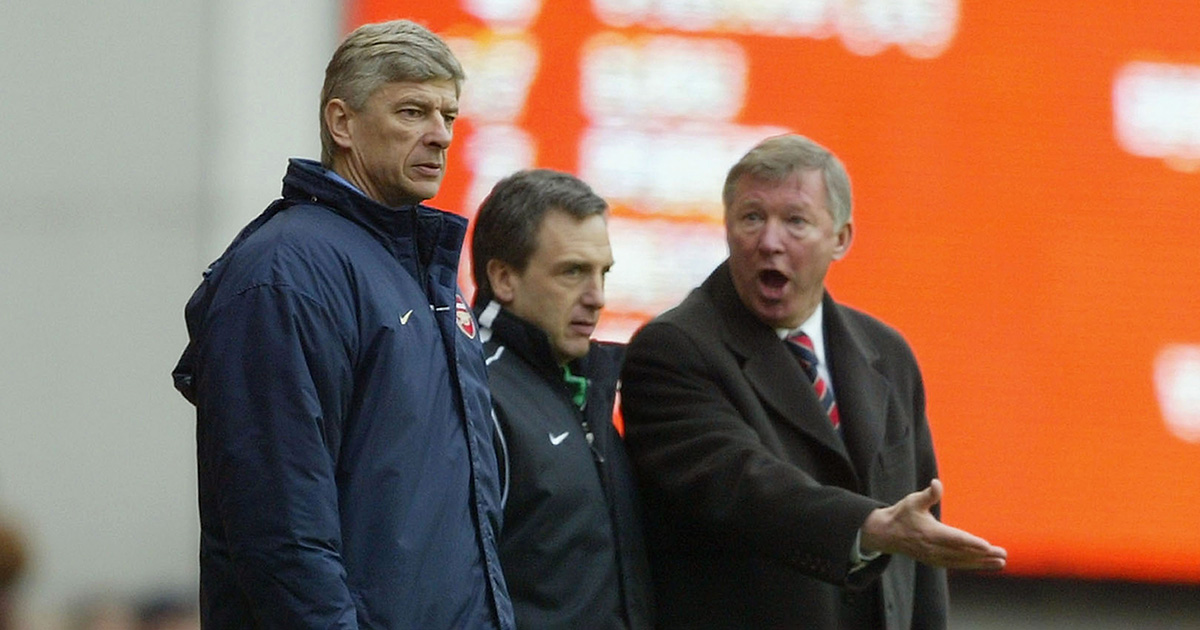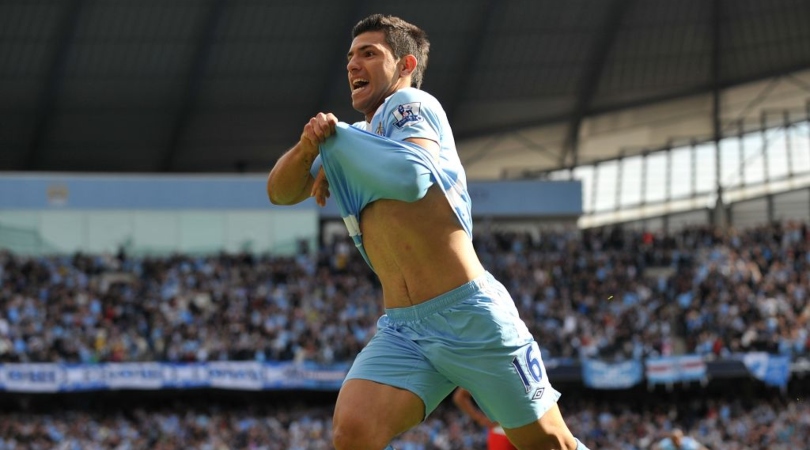Premier League: The Big Six era is OVER, with a new era now taking its place
The Premier League Big Six has defined England's top flight for a while now – but finally, its dominance looks to be done

The Big Six has defined the Premier League, at least on Sky Sports, for a while now… whether you love, loathe or just feel indifferent to the term.
It's been inescapable. Arsenal, Chelsea, Liverpool, Manchester City, Manchester United and Tottenham Hotspur fought it out for four Champions League spots and two Europa League spots for over a decade: Super Sunday was often built around two of them facing off, while the other 14 teams in the league all fought to stop them from motoring into the distance – sometimes literally, with threats of breakaways. Pick any two and you could find beef. Pair any one with another club and it would be watchable.
Well, everything comes to an end. The Premier League is 31 years old this year: it's an era in itself of English football. But within that time, there have been subtle changes brought about by new managers, new owners and new developments. We're just entering a brave new world for the Prem once more, as another chapter closes at the end of this season.
Each Premier League era, up to the Big Six… 1992-97: The Kings of the North Era

Eric Cantona has a claim as the most transformative footballer that English has ever known: equal parts continental flair with that fire that made our audiences warm to him immediately. The Frenchman's move from Leeds United across the Pennines brought Sir Alex Ferguson his first Premier League title – and together, they'd win a second shortly after.
Blackburn Rovers would win in 1995, Liverpool and Newcastle United would memorably push for the crown, too, as the power lay in the north of England for at least the first few Premier League campaigns. Aston Villa were the southernmost club in a top three before Arsenal managed it in 1997. That feels bonkers now, right?
Fergie defined this time with his mind games, his Class of 92 and his ever-evolving United team – but it wasn't without its challengers stepping up, in the form of Keegan, Dalglish and others. For some, this era of the Prem will never, ever be beaten. Yes, mainly United fans.
1997-2004: The Duopoly Era

Once again, it was a Frenchman who would change English football, bringing the Premier League title down south for a first time in 1998.
The best features, fun and footballing quizzes, straight to your inbox every week.
For six years, realistically, the title was either going to be won by Arsene Wenger or Sir Alex Ferguson, as the pair formed arguably the division's greatest rivalry. It felt like the Battle of Britpop as north faced south in a bitter war of cultures and identities – and though other teams would breach the top occasionally during this time, the title either swung one way or the other.
Other clubs would have success in cups, some would go deep in Europe. But these were the two forces of English football: it was Sir Alex and Arsene who defined the Premier League at this point, with the former pipping the latter 4-3 for titles during this time.
2004-2010: The Big Four Era

In 2003, Arsenal vice-chairman David Dein described new Chelsea owner Roman Abramovich as parking, "his tanks on our lawn and firing £50 notes at us". Yet it was the Reds who would win the Champions League before the Blues.
Liverpool and Chelsea joined the party in the mid-noughties, with Rafael Benitez and Jose Mourinho taking charge of each side respectively. Don't believe it was now a top four? Check out this FourFourTwo cover from 2008 which specifically references such a concept…

As Wenger had revolutionised English football in the late 90s, Benitez and Mourinho reshaped it tactically again, their 4-3-3s and continental styles proving better-suited for European glory. Wenger would refocus around Cesc Fabregas with his Gunners side cash-strapped from building the Emirates Stadium; Ferguson would recalibrate with a thicker midfield, too, before conquering Europe again in 2008.
Between 2005 and 2010, only two teams other than these four would finish in those Champions League spots. Everton did it under David Moyes in 2005, failing to make the group stage after qualifying – though Liverpool qualified as European champions that year – before Tottenham pipped the Reds in 2010 to bookend this era.
2010-2016: The Big Six Era pt. 1 (Rises and Falls)

In 2010, Manchester City were beaten 1-0 at the Etihad by a Peter Crouch strike, as Tottenham secured Champions League football for the first time. City needn't have worried about being left behind, mind.
A new decade brought a new force in Manchester – backed, of course, by riches that we'd only seen at Stamford Bridge. City would land an FA Cup in 2011 as a foreshadowing of what was to come in the league the following year: but the Big Four was extended by another two, as Tottenham would get into Europe every time from 2010 to 2016, finishing in the top four three times. In 2013, Ferguson stepped aside and this really felt like open season, with unpredictable title races.
Really, this was an era of turbulence for English football, while Spain ruled the roost. A World Cup in 2010 for La Roja was followed by Champions League titles in 2011 and 2014 through to 2018 for El Clasico, while no English side reached a Champions League final between 2013 and 2017. Real Madrid and Barcelona were the two most glamorous sides on Earth, with Bayern Munich and Juventus close behind. England struggled to attract the best managers and players during this time – and it showed. Even in the seasons immediately before Fergie left, United were a shadow of some of their better sides.
It took Leicester City winning a title in 2016 to stop the Big Six from being quite so complacent in the league and actually reassert their dominance for good…
2016-2022: The Big Six Era pt. 2 (The Super Gaffers)

Just as Arsene and Jose had done before him, Pep Guardiola brought the next era to English football, complete with his ball-playing keeper, false nines and dual 10s. From 2016 onwards, the Big Six grew stronger and more ruthless than ever.
Each of the big guns had a manager to match. Jurgen Klopp brought heavy metal football to Liverpool, Antonio Conte won a first league title with a back three in England at Chelsea, with Pochettino at Spurs, Wenger at Arsenal and Mourinho at United completing a box office lineup. At the start of the 2016/17 season, the FourFourTwo Season Preview cover announced 'The Season of the Super Gaffer', complete with illustrations of all 20 managers – and it felt like a brave new world from post-Fergie malaise.

Naturally, not every manager would last but, of course, the kingpin manager feel continued, as some clubs opted for club icons as coaches in the absence of true A-list bosses – Ole Gunnar Solskjaer at United, Mikel Arteta at Arsenal and Frank Lampard at Chelsea, but to name a few – while the likes of Marcelo Bielsa, Carlo Ancelotti and Manuel Pellegrini all managed "smaller" teams.
Leicester would push close, Arsenal would drop out of the top six a couple of times (albeit winning trophies in this period) and the quality of the Premier League would continue to grow. The Premier League thrived in Europe a little more but most importantly, it caught up tactically once more with Spain and Germany. England actually doing better at the World Cup in 2018 was proof of the Prem's improvement, right?
2023 onwards: The… Super Billionaire Era?

Between 2016 and 2022, it was argued that Leicester City could displace one of the underfiring giants from the Big Six altogether. Just one problem with that: nothing about the very nature of Leicester's model was "big".
In 2023, there are big hitters – and those doing things on a smaller scale are competing with the bigger clubs. Newcastle are set for Champions League football as possibly the richest club on Earth but they're yet to overhaul the players who were in relegation scraps. Chelsea have overhauled their squad with new owners but lie midtable, while Liverpool and Manchester United could both have new investors by next season, and Tottenham fans are angling for Daniel Levy's exit. This could be the era of brand-new owners. But one thing's for certain: the Big Six as we know it is over.
Were a Super League to rear its head, Newcastle would be among those interested. Is it now a Big Seven? Possibly – but who knows whether Brighton & Hove Albion, Fulham and Brentford have enjoyed one-off stunners this season or can maintain that trajectory, with the gap between themselves and some of the traditional Big Six closer than ever. With smaller clubs and players bought for less competing at the top, have we reached the point where money doesn't matter quite so much? That would be nice, wouldn't it? Or is this the mad one-off season akin to 2015/16 before something more familiar next season?
Whether we're set for a Big Seven, a Big Six without Chelsea, a Big Eight, a Dominant Top Half or the Big Four is to be re-worked once more, we're due this update. Football moves in cycles, after all. It's reassuring in a way to know that everything will pass. Including who the "big clubs" at the top of the table are.

Mark White has been at on FourFourTwo since joining in January 2020, first as a staff writer before becoming content editor in 2023. An encyclopedia of football shirts and boots knowledge – both past and present – Mark has also represented FFT at both FA Cup and League Cup finals (though didn't receive a winners' medal on either occasion) and has written pieces for the mag ranging on subjects from Bobby Robson's season at Barcelona to Robinho's career. He has written cover features for the mag on Mikel Arteta and Martin Odegaard, and is assisted by his cat, Rosie, who has interned for the brand since lockdown.
